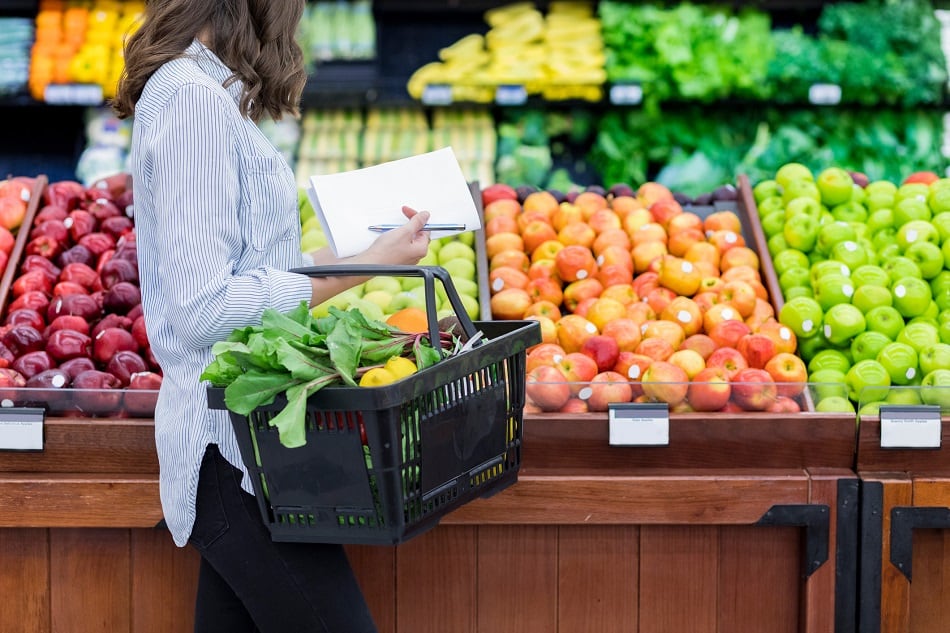"In the fresh food space, the four trends offering the most opportunity at a macro level are transparency, convenience, health, and snacking," noted Nielsen.
Demand for transparency, which consumers most strongly associate with sustainability-related claims, according to Nielsen, is becoming not only a 'nice-to-have' for products, but simply the cost of doing business.
"Sustainability, which sits within the broader topic of transparency, is becoming increasingly important to many consumers—and the sales figures prove it: we’ve seen a 20% increase in sustainable product sales since 2014," said Nielsen.
In addition, in 2018, sustainable products accounted for 22% of total store sales.
Dollars sales of fresh department organics, another certification closely tied to sustainability among consumers, grew 9% last year accounting for 40% of of total food growth across the store.
"It’s also worth noting that sustainability spans well beyond what we eat. As we see more value-added products come to market for added consumer convenience, their packaging is just as much of a consideration as the food they contain," added Nielsen.
Demonstrating how important sustainable packaging has become, 4,000 new produce products with sustainable or recyclable packaging were introduced last year, a 4.1% increase from the previous year.
Convenience is key
Convenient fresh food is gaining traction as consumers search for pre-made fresh food offerings (e.g. chilled soups, pre-cut or pre-'spiralized' veggies) to meal kits.
Despite many meal kits companies having to restructure their market approach in recent years, dollar sales of meal kits increased 47% between 2017 and 2018, increasing household penetration from 9% to 12%. Value-add vegetables registered a 10% increase in dollar sales.
Another driver of fresh, convenient food products is the 8% increase in US consumers reporting that they follow a specific diet as part of a "healthy lifestyle."
"In line with our quest for shortcuts and time-savers, many consumers have adopted regular snacking regiments given that they can be quick, easily prepared and take less time to eat than a full meal. In some cases, consumers are replacing full meals with snacks," stated Nielsen.
Pre-made salads and deli items containing vegetables, increased by 5% and 6.2% in dollar sales respectively.
Culturally diverse future for fresh food
Beyond sustainability and making healthy swaps, consumers are broadening their fresh food horizons with globally-inspired products, according to Nielsen.
"The US is growing more culturally diverse as each new year comes along, and that diversity is having a notable impact on food preferences. In addition to seeing greater Hispanic influence across American flavor profiles, we’re also seeing the influence of Asian products as well," noted Nielsen.
The market sales data firm tracked a dollar sales rise in Asian, South American, and Middle Eastern products across the store, particularly with respect to fruits and herbs:
- Sales of guava (used for Mexican, Latin/South American, Asian and Middle Eastern dishes) increased at a compound annual growth rate of 15% over the past five years.
- Sales of pitaya, commonly known as dragon fruit (used in Mexican, latin/South American and Asian dishes), have increased at a compound annual growth rate of 33% over the past five years.
- Sales of fresh ginger (used in Asian and Middle Eastern dishes) have grown at a five-year compound growth rate of 9%
- Sales of fresh epazote, an herb native to Mexico, Central and South America, have grown at a five-year compound annual growth rate of 10%.
- Sales of fresh turmeric have grown at a five-year compound annual growth rate of 76%.
What else could be next?
Similar to cauliflower's rise to fame as a healthy swap, Nielsen has forecasted that sweet corn could mimic cauliflower's growth trajectory.
Plant-based meat alternative Jackfruit is having a moment, growing dollar sales by 79% in 2018, helped by national exposure by fast food chains such as Pizza Hut and Blackwood BBQ.
"As the year progresses, we expect consumers’ focus on fresh to sharpen a bit as they seek to make their indulgent choices a little better for them," said Nielsen.


